
Over the past decade, video streaming services such as Netflix and YouTube have grown to account for the most significant percentage of the Internet’s downstream traffic.
In the case of Netflix, a key and means to accommodate for such growth has been its content delivery network (CDN), Netflix Open Connect, which improves the quality and speed of streaming by bringing content closer to end users.
What some may not know is that Netflix Open Connect infrastructure has been IPv6 capable since 2012. That said, there is little information on how much traffic actually travels over it compared to IPv4, or its quality. So, to measure this, we at the Technical University of Munich, in collaboration with SamKnows, actively measured Netflix content delivery from roughly 100 dual-stack SamKnows probes deployed around the globe between July 2016 and April 2019.
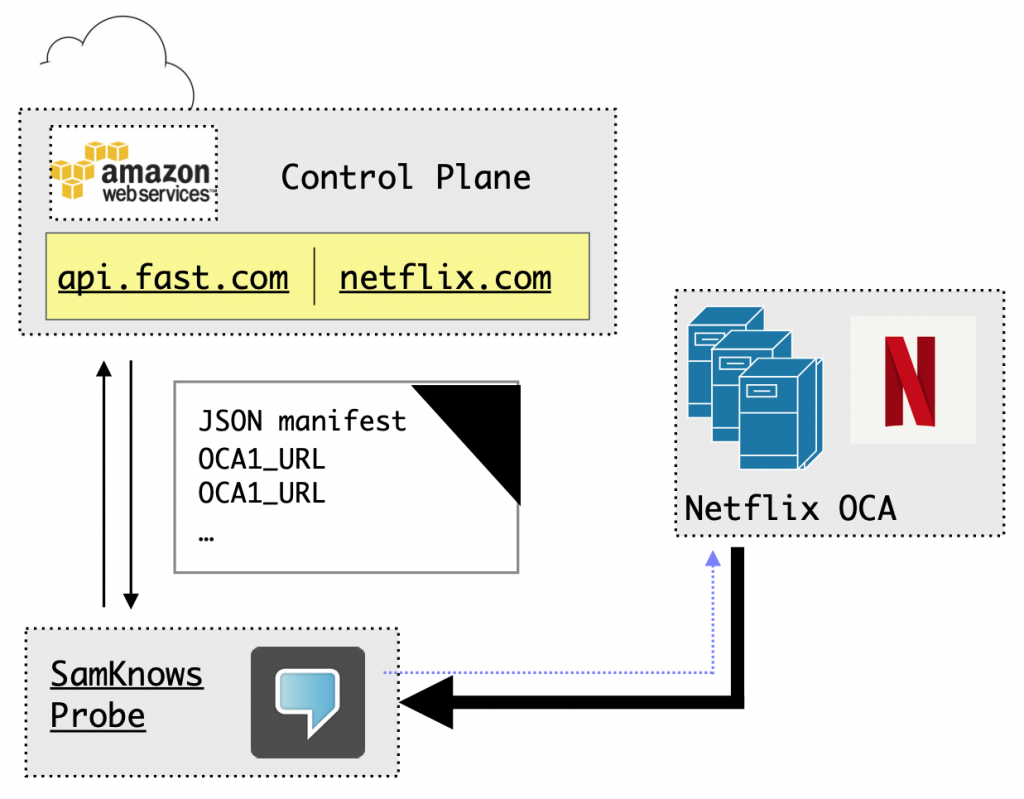
We tested the latency and throughput hourly by downloading content from Netflix Open Connect Appliances (OCAs) over both IPv4 and IPv6, based on the same steering logic that applies to regular Netflix customers.
Below are some of our observations as reported in our recent paper, A Longitudinal View of Netflix: Content Delivery over IPv6 and Content Cache Deployments, regarding content delivery over IPv6 and content caches.
Success rates and IPv6 preference
We found Netflix OCA servers to be equally available over both IPv4 and IPv6 throughout the day; the daily success rates were around 100% for most probes. However, some probes experienced lower success rates over IPv6 due to issues closer to the vantage point.
With the recommended Happy Eyeballs [RFC 8305] timer of 250ms, clients strongly prefer connecting to Netflix OCA servers over IPv6, although the IPv6 preference drops slightly during peak hours.
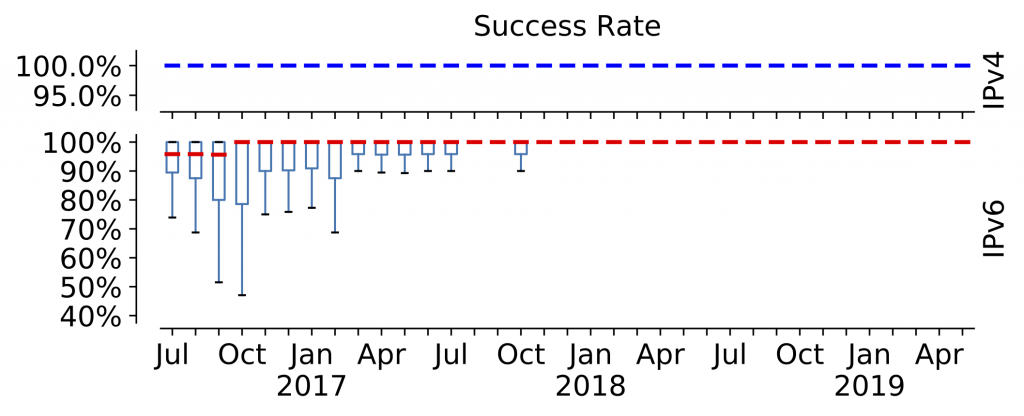

Latency
Over the years, TCP connection establishment times to Netflix OCA servers have reduced by 40% over both IPv4 and IPv6 (from roughly 25ms to 15ms).
As of 2019, half of the samples connect faster over IPv6; the latency difference between IPv4 and IPv6 is marginal.
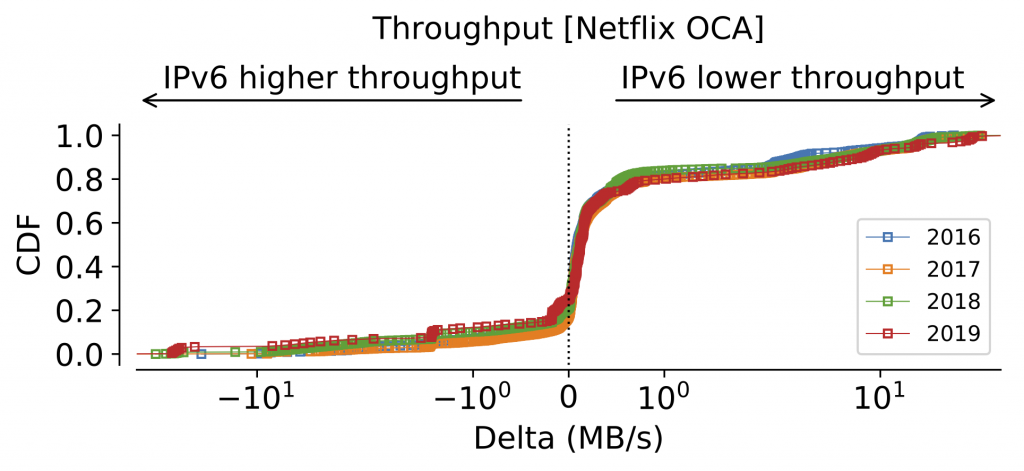
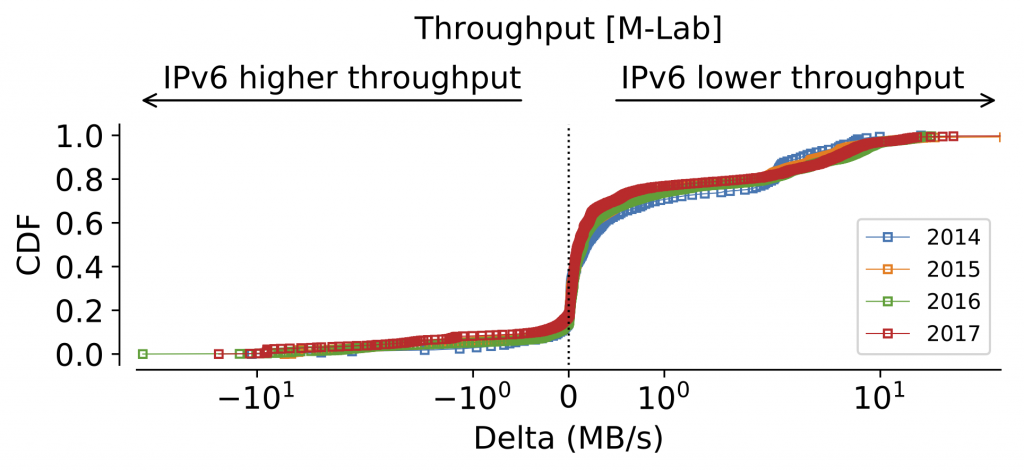
Figure 4 — Distribution of throughput differences between IPv4 and IPv6 toward Netflix OCA (above) and M-Lab (below) destinations, for each probe per day over the years. 75% of the samples exhibit lower throughput over IPv6.
Throughput
The achieved throughput toward Netflix OCAs has increased over the years over both IPv4 and IPv6 (from around 10MB/s to 12MB/s), indicating a possible increase of line rates. Throughput measurements toward M-Lab (which were measured with the same set of probes) have shown similar results, meaning that these observations are not specific to Netflix.
IPv4 exhibits slightly higher throughput for more than 75% of the samples in comparison with IPv6, with most differences in throughput ranging from -1 to +1MB/s when comparing both address families.
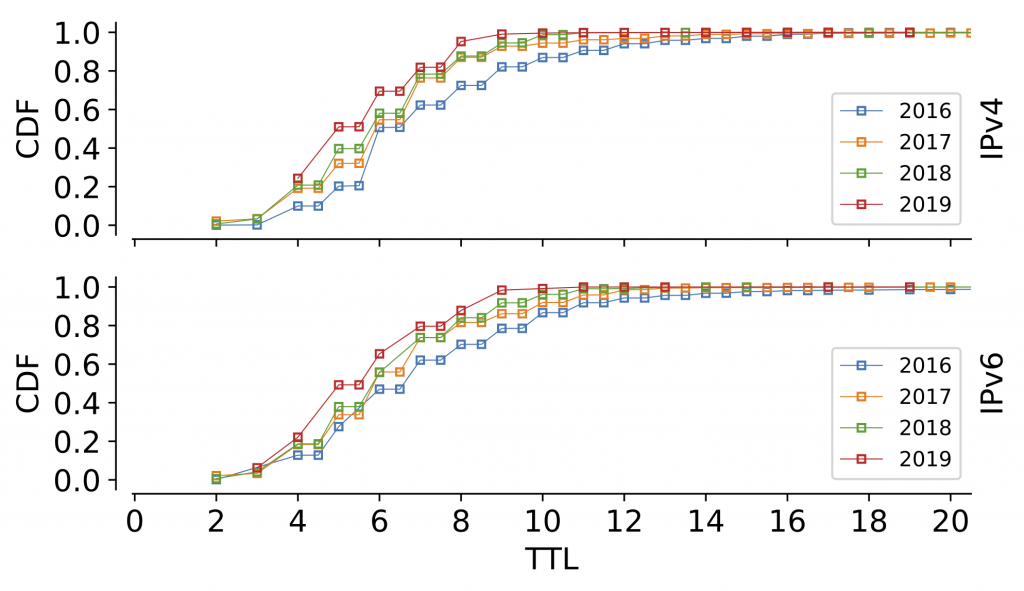
IP path lengths
Over the years, Netflix OCAs have moved closer to the edge, with increasing numbers of IP paths becoming evenly long when comparing IPv4 and IPv6; most OCAs are reachable within nine IP hops over either address family.
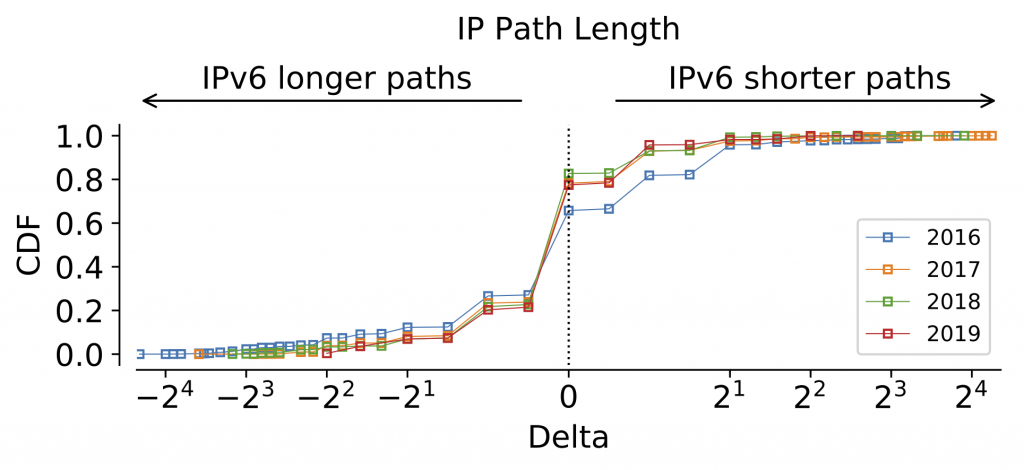
Content caches
OCAs deployed inside the ISP boundary (that is, ISP caches) reduce the latency over both address families by as much as 150ms. Over the years, the latency benefits toward such caches have become larger over IPv4 and smaller over IPv6.
Throughput can also increase by a factor of up to three when streaming from caches (increasing to around 33MB/s throughput) over either address family.
Latency benefits are larger when caches are available over IPv4-only as opposed to IPv6-only. In situations where caches are dual-stacked, it takes fewer IP hops over IPv6 to reach the cache. Despite longer paths over IPv4, more samples still exhibit lower latency, meaning that IP paths do not necessarily correlate with latency.
Content caches are reachable within six IP hops and can reduce path lengths by 40% over IPv4 and by half over IPv6. Caches further decrease TCP connect times by 64% over both address families (down from 57ms to 21ms).
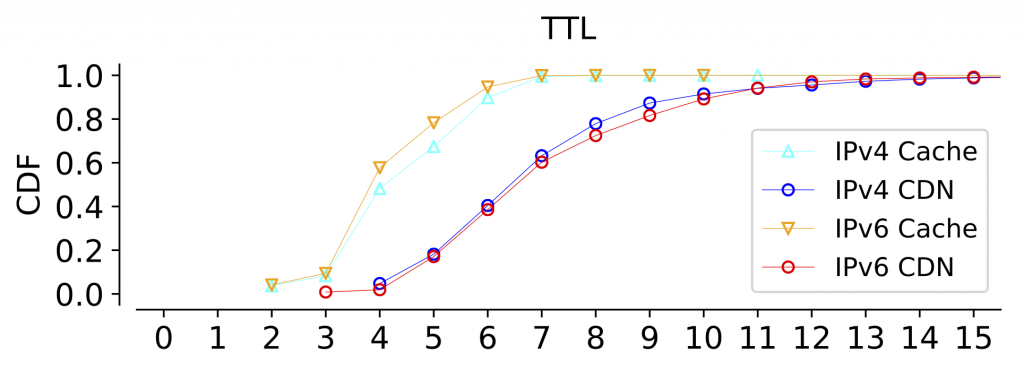
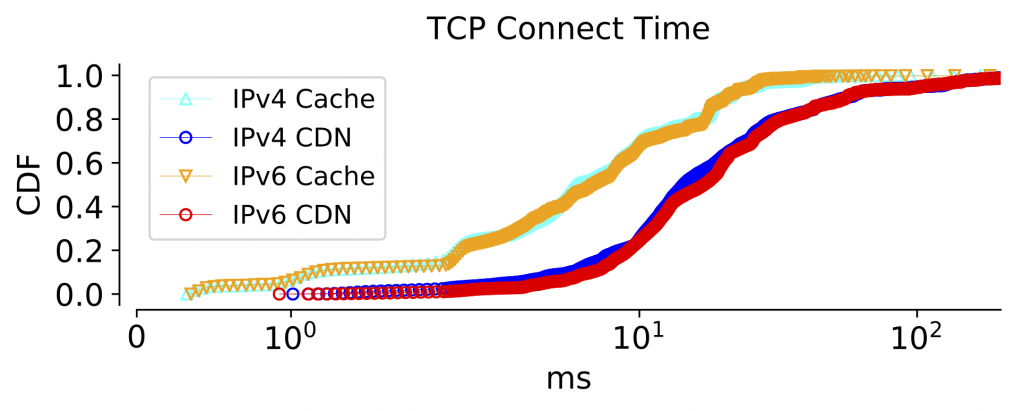
Figure 7 — Distribution of IP path lengths (above) and TCP connect times (below) for all measurement pairs, split by cache and CDN deployments. ISP caches can reduce IP path lengths by 40% over IPv4 and by 50% over IPv6. Latency improvements are also visible, with TCP connect times being reduced by up to 64% over both address families.
IPv6 performance is roughly on par with IPv4
The results presented in this study highlight the importance of data collection over a longitudinal period to understand the evolution of content delivery of a popular video streaming service on the Internet, particularly in light of IPv6 adoption and increasing edge deployments.
Overall, while IPv6 performance is roughly on par with IPv4 performance, content caches deployed in ISP networks can bring substantial benefits in terms of latency and throughput.
We hope our empirical data will allow simulation studies to appropriately model Netflix content delivery in future studies. We also recommend ISPs to embed OCAs directly within the ISP network to ensure lower latency and higher throughput over both address families.
For more details about the study, please refer to the paper [PDF ] or watch a presentation we gave at INFOCOM 2020. You can find the analysis code and dataset on GitHub.
Trinh Viet Doan is a PhD Student at the Technical University of Munich.
The views expressed by the authors of this blog are their own and do not necessarily reflect the views of APNIC. Please note a Code of Conduct applies to this blog.
